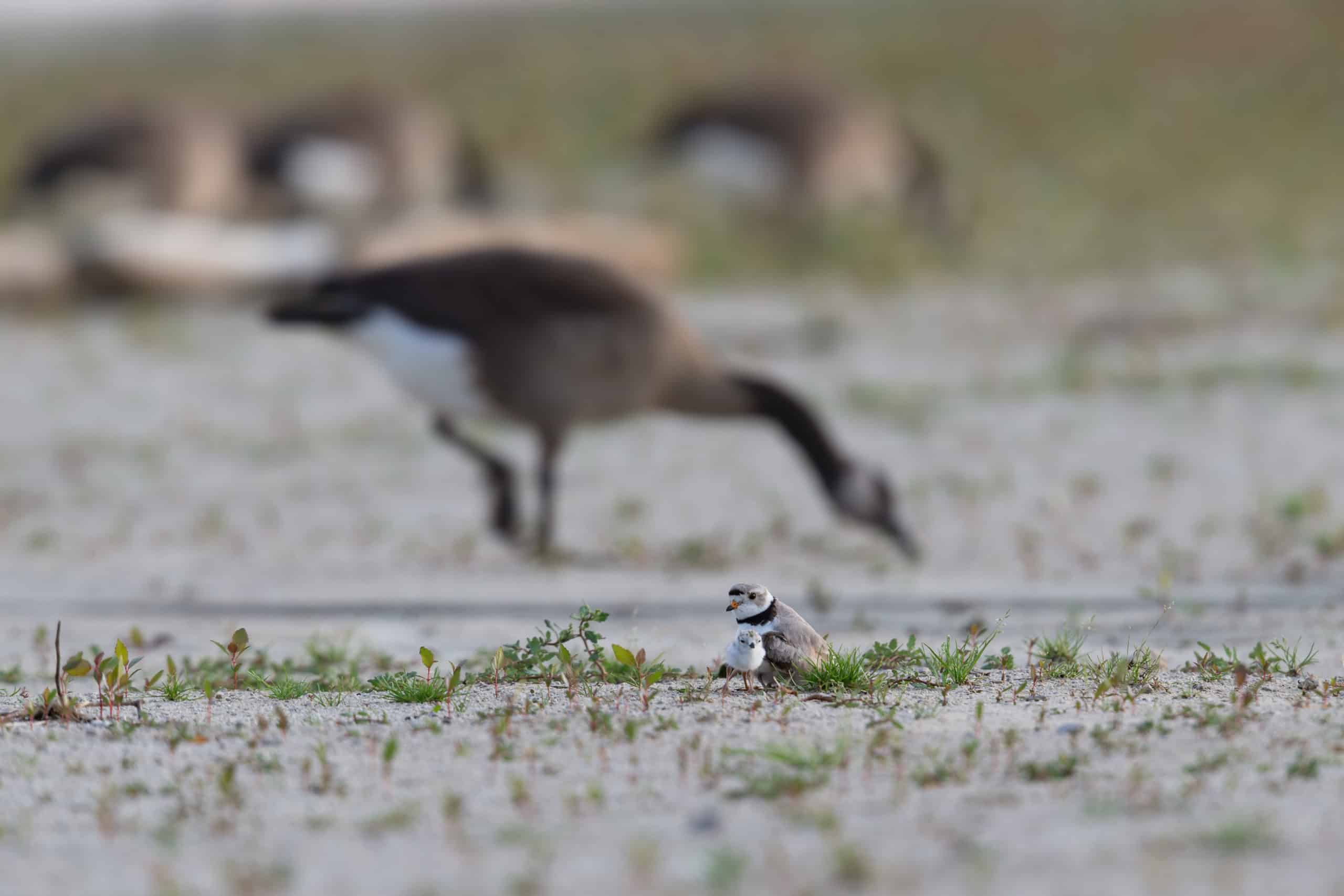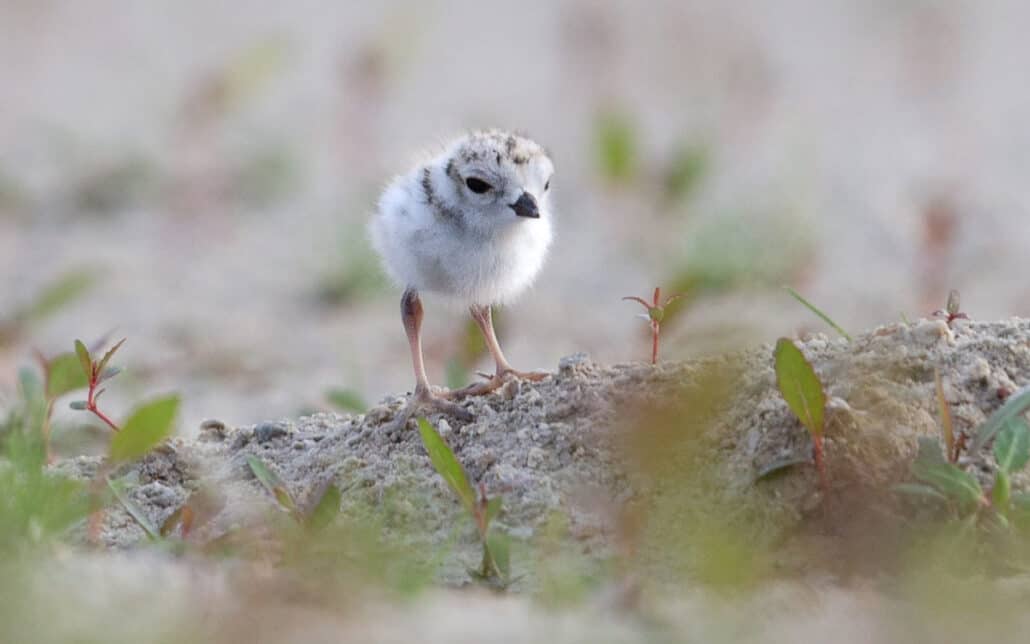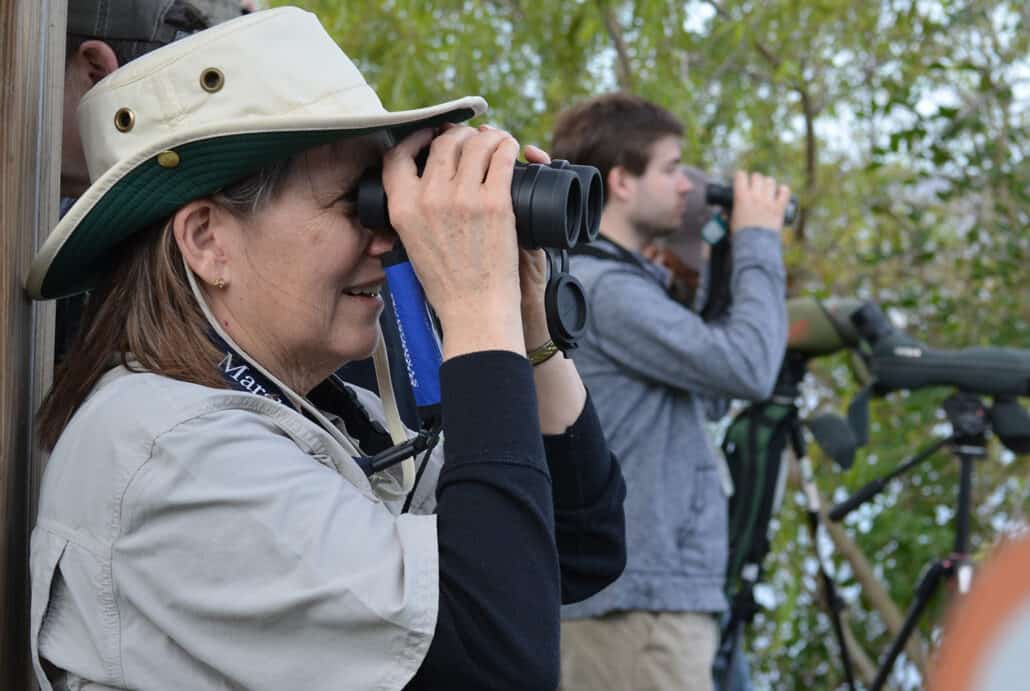
What mighty force could possibly bring a myriad of agencies (US Fish and WIldlife Service, Ohio State Parks, Ohio Department of Natural Resources, and the US Department of Agriculture’s APHIS division, specifically) to collaborate?
A single, solitary piping plover nest.
True story: This past summer, a pair of breeding piping plovers successfully hatched four chicks at an inland beach near the shores of Lake Erie at Maumee Bay State Park in Curtice, Ohio. Without the organizational efforts of Black Swamp Bird Observatory and Great Lakes Piping Plover Conservation Team, in addition to the aforementioned local, state, and federal agencies, it’s impossible to imagine that the nest site could have remained undisturbed—let alone see all four chicks successfully fledge.
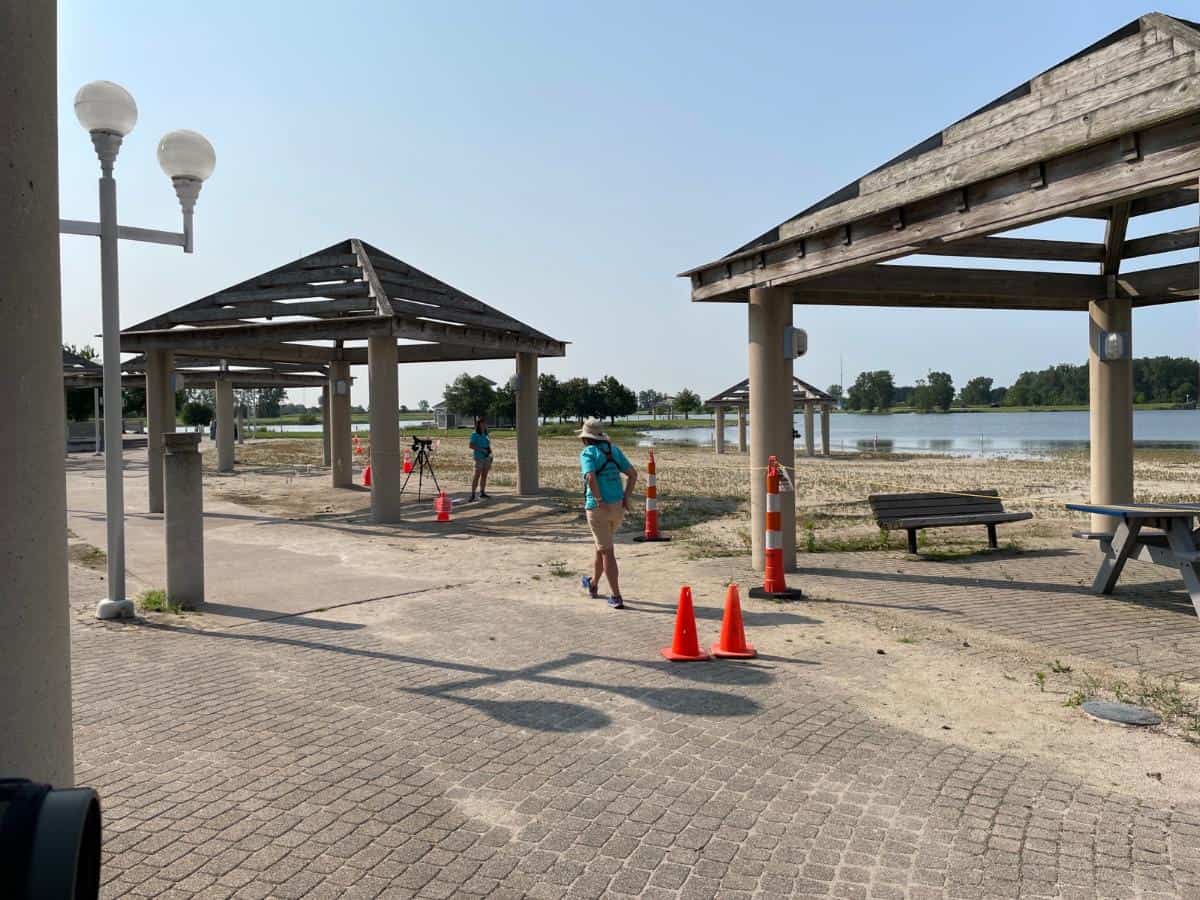
Recently I met with my friend Chris Brinkman to discuss this very nest. Chris is not only a stellar photographer and advocate for conservation; just this past spring, he completed immersive fieldwork with piping plovers in New Jersey. Upon learning that this very species had nested in northwest Ohio, Chris became a volunteer with the effort to monitor the Ohio nest site, and applied his learnings from New Jersey to help nest monitors interpret behavior. I’m fortunate and grateful to have been able to glean from his experiences why this particular little nest mattered so much.
A Significant Nest
The piping plover is a rare shorebird, but especially in the case of the Great Lakes piping plover population. Great Lakes piping plovers are listed as federally endangered; in fact, the 2021 Ohio nest was the first to be documented in the state in 83 years. According to Chris, conservation efforts with the Atlantic Coast piping plover population have stabilized that particular population to the point that nest monitoring of this species of concern there looks very different from the efforts in Ohio in 2021. Where a single individual in New Jersey will document several nests over the course of a day, the Maumee Bay nest was monitored from 6 a.m. to 10 p.m. every day, from the first signs of a nest scrape in early June, through the four birds fledging in late July.
If that sounds excessive, consider this: in 1987, 12 documented nests were recorded in the Great Lakes population. By 2021, this number has grown to 74—a bit less than half the stated recovery goal of 150 breeding pairs.
It’s All About Conservation
If it hadn’t been for some painstaking advocacy by concerned birders to protect a piping plover nest site on a busy Chicago beach in 2019, the Ohio nest likely wouldn’t have been. That now-infamous Chicago breeding pair, Monty and Rose, are the parents of Nish, the male parent of the Ohio piping plover family. Reports in May 2021 of Nish (who’s banded, which is how we know Nish is the male parent) and a few female piping plovers in a nearby northwest Ohio marsh habitat alerted area birders to be on the lookout.
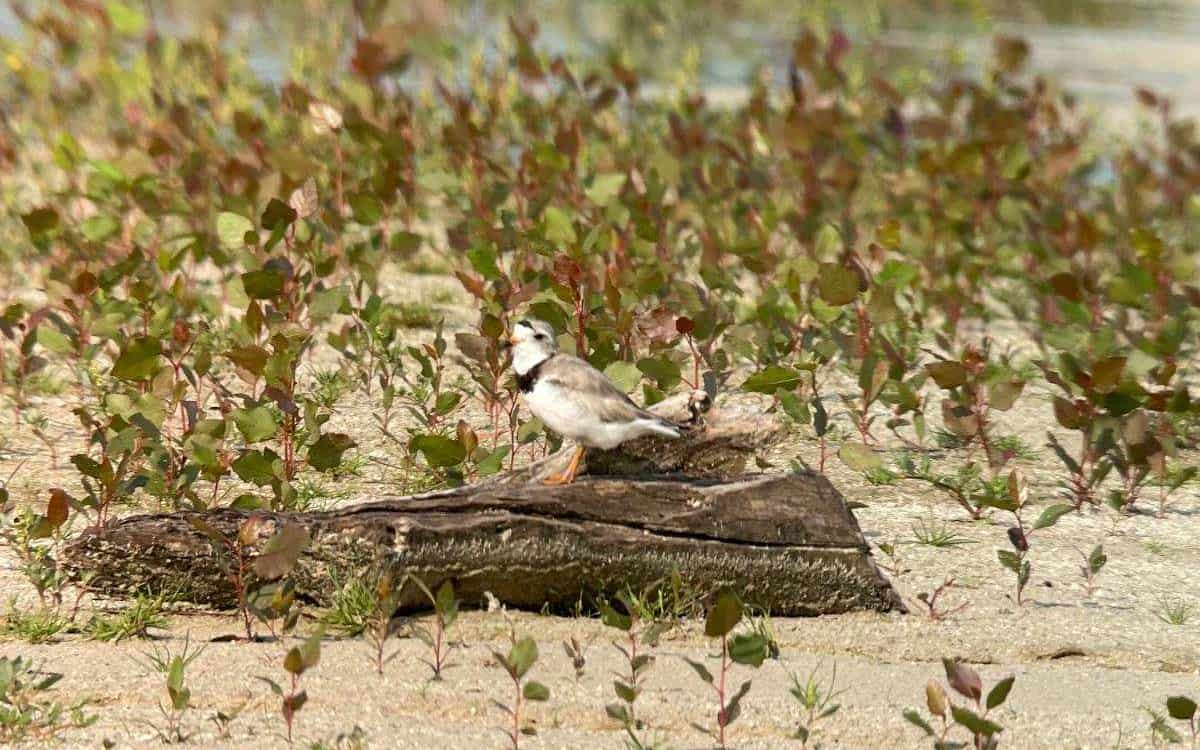
A rep from US Fish and Wildlife explained to birder and BSBO director Kim Kaufman what to look for, and lo and behold, she discovered the nest site at Maumee Bay, reported it, and within 24 hours, a predator enclosure was erected around the nest site. Within a month, more than 100 trained volunteers had been enlisted to monitor the site.
Chris’s recent field work in New Jersey allowed him to offer constructive insights to the monitoring team. He also shot video of the birds to chart their progression and to document the massive effort involved in monitoring a nest to this degree. I was fortunate to be able to visit the site on July 18. By this point, Nellie, Nish’s mate, had flown the proverbial coop, leaving brooding solely to Nish. I can vouch that Nish was a very busy parent; on the day I observed the family, he expended much energy to encourage the fledglings to leave the safety of the inland beach (still secured at this point) and explore the lakeshore.
Nest monitors, walkie-talkies in hand, updated each other and documented the erratic movement of each young bird. Because the birds were just beginning to test their wings, it was critical to ensure they remained in the enclosure, lest they become vulnerable to what threatened them from beyond the fencing: humans, cyclists, dogs, natural predators, and any form of recreation in the immediate area.
I left that day impressed at the extent of the training, organization, and dedication to this one single nest site. I felt hopeful that I might be able to plan a return visit in 2022. Because a successful nest site will imprint on the birds, it’s likely that Nellie and Nish will return to attempt another brood.
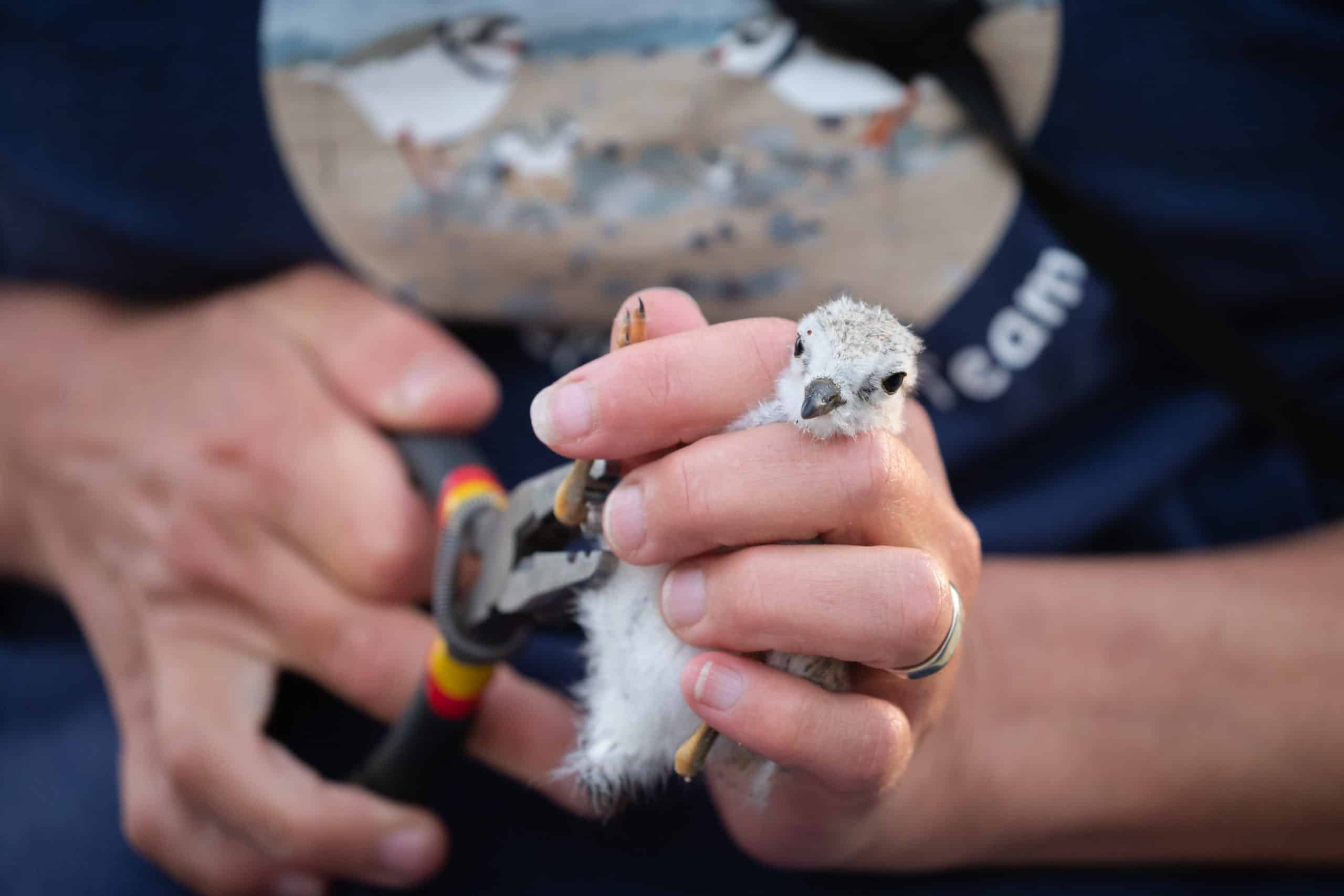
Why This Nest Matters
In addition to what I’ve shared above, I’ll also leave readers with some numbers and final thoughts:
*On average, a nesting pair of piping plovers will raise one chick to fledge. By ensuring that four birds were able to fledge, the Maumee Bay monitoring team made a vital step toward the benchmark goal of 150 Great Lakes nesting piping plover pairs.
*During his New Jersey research, Chris noted that as a result of a single storm, 37 of 44 piping plover nests (one-third of the entire state’s nests) were destroyed. Because of climate disruption, stronger storm surges will continue to decimate nest sites like this one.

*Closing off a section of inland beach resulted in tern and gull species quickly exploiting the protected habitat. The monitoring crew took this as a positive signal that birds will adapt to and reclaim protected beach areas.
*The biggest threat to piping plovers is habitat loss, followed by flooding/sea level rise and predation.
*As of late August 2021 (the publishing of this piece), one of the four chicks, Kickapoo, has been lost to predation. Although a harsh truth, that the three remaining chicks continue to build strength in time for migration is a hopeful sign. And they’re still being monitored by the intrepid volunteer team! Huzzah!
